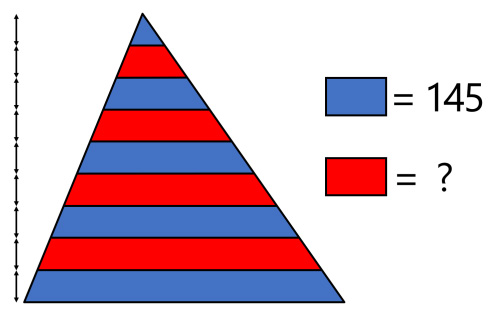 This is a nifty problem from Presh Talwalkar.
This is a nifty problem from Presh Talwalkar.
“This is from a Manga called Q.E.D. I thank Sparky from the Philippines for the suggestion!
A string of beads is formed from 25 circles of the same size. The string passes through the center of each circle. The area enclosed by the string inside each circle is shaded in blue, and the remaining areas of the circles are shaded in orange. What is the value of the orange area minus the blue area? Calculate the area in terms of r, the radius of each circle.”
See the String of Beads Puzzle for solutions.

 Another
Another  This is a nifty
This is a nifty  Here is another typical sum puzzle from Presh Talwalkar.
Here is another typical sum puzzle from Presh Talwalkar. This is a fairly straight-forward problem from Presh Talwalkar.
This is a fairly straight-forward problem from Presh Talwalkar. This seemingly impossible
This seemingly impossible  This
This  This is another infinite series from
This is another infinite series from  This is another candle burning problem, presented by
This is another candle burning problem, presented by  This is a nice brain tickling problem from
This is a nice brain tickling problem from